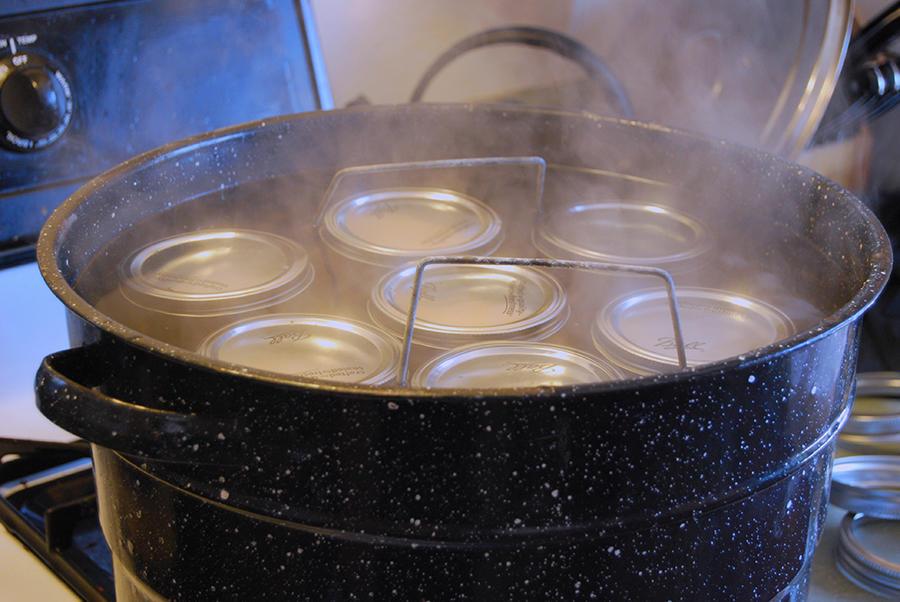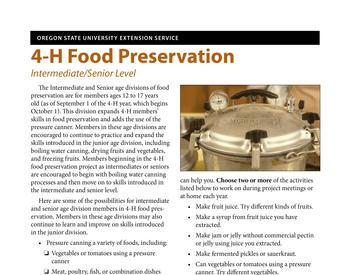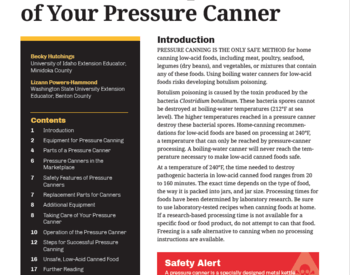The Junior age division of food preservation is for members ages 9 to 11 (as of September 1 of the 4-H year, which begins October 1). This division focuses on beginning food preservation skills. As a junior 4-H member, you learn basic procedures and try different methods.
Here are some of the things you can learn about in the 4-H Food Preservation project as a junior 4-H member:
- Boiling water (water bath) canning, including:
- canned fruits or berries
- canned pie filling
- fruit sauces or salsas
- cooked jams and jellies using commercial pectin
- canned tomatoes and tomato products such as tomato sauce, juice, ketchup, or salsa
- quick pickles and relishes from cucumbers and other vegetables or fruits
- Freezing fruits and vegetables
- Drying fruits, fruit leather, vegetables, and herbs
- Using preserved foods in recipes
- Selecting and using food preservation equipment
- Labeling preserved food correctly
- Keeping food safe to eat
You will learn how to do some of these things at your project meetings and some things you will learn about and practice at home. Choose from the following activities to do at home or develop your own activities. Your leader, parents, or another adult can help you with these activities. Choose at least two new activities each year.
Examples of activities might include:
- Can a variety of fruits, tomatoes, or pickles using a boiling water canner. Try different kinds of berries and fruits as well as a variety of techniques, such as fruit sauces; tomato sauce, juice, or ketchup; fruit or tomato salsa; and quick pickles and relishes from cucumbers, other vegetables, and fruits.
- Freeze containers of fruit. Try different berries and fruit.
- Prepare jam with added pectin, uncooked, cooked, or both ways.
- Make fruit leather. Try different kinds of fruit or combinations.
- Dry a variety of fruits or vegetables.
- Prepare a dish from a recipe using preserved tomatoes or canned fruit.
You’ll also have a chance to share what you’ve learned with others. This might be at your club meetings or in some other way. Some ways to share include:
- Preparing meals or snacks for your family and friends using foods you have preserved
- Showing other people how to do something you have learned in the project
- Making a gift package for someone using foods you have preserved
- Participating in the fair by giving a presentation, entering a food preparation contest, or entering an exhibit. If you want to exhibit at the fair, check the requirements with your 4-H leader or in the current 4-H State Fair Premium Book on the 4-H website.
Your leader will have other ideas about how your club might share with others and be active in the county and state 4-H program. Plan to attend all your club meetings and participate fully.
At some of your club meetings, your leader will give you handouts (like this one) or bulletins for you to take home. These will tell you about some of the things you’ll need to know as you learn how to can, freeze, and dry foods.
Plan to keep them together in a notebook so you can find them when you need them. Exhibits for county and state fair are required to be made from recipes and instructions from approved sources located at the OSU Extension Service, food preservation web page.
A Note for Parents
The 4-H food preservation project is designed so that members will have opportunities for a variety of experiences. 4-H members enrolled in the 4-H food preservation project will:
- Learn principles of safe food preservation
- Practice food preservation techniques in canning, freezing, and drying
- Use preserved foods creatively in meals and snacks
- Share what they have learned in meaningful ways
Some of the specific skills to be learned are listed in the note to members. Your child will need special help from you or another family member or friend to learn some of these skills; safety will be an important consideration as members work with heavy jars, hot liquids, and a variety of equipment. For food safety, it is also important that members use the most current processing temperatures and times as recommended by Oregon State University or the United States Department of Agriculture. Leaders have information for locating the most current recommendations. Current recommendations can also be found at the National Center for Food Preservation or the OSU Extension Service, food preservation web page.
Here are some other ways you can help:
- Show interest and enthusiasm in your child’s work
- Encourage your child when he or she succeeds and even more when things are not going well
- Provide transportation to local meetings and county activities in which your child and other club members are interested
- Support your local 4-H leaders—offer your services to assist and let them know you appreciate their efforts
The 4-H Food Preservation project offers your child a variety of experiences—we hope he or she finds the project interesting and fun.


